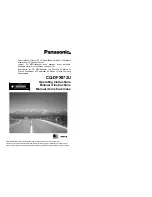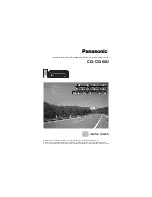
CHAPTER 6
PAGE 47
CHAPTER 6
IN CASE OF DIFFICULTY
This section of your user's manual will discuss in general terms how to keep your CWR6850 in top
operating condition and typical operating problems you might encounter (and some solutions). Cir-
cuit description, repair procedures, and schematic diagrams are included in the separate CWR6850
CUSTOMER MAINTENANCE MANUAL, available separately from HAL Communications Corp. or its
dealers.
6.1
Care and Feeding of Your CWR6850
Your CWR6850 is the latest of many generations of terminals sold by HAL Communications. In
every way, it has been designed, constructed, and tested to assure years of trouble-free operation.
However, there are a number of simple procedures that you, the user, can follow to further im-
prove the reliability, performance, and lifetime of the terminal. The following suggestions are of-
fered to help preserve a long operating life for your CWR6850.
Environment:
Electric equipment is very susceptible to variations in temperature, relative humidity, and to dust
and dirt accumulations. The CWR6850 will operate in normal room-temperature environments and
should be as tolerant of temperature extremes as you are while operating it. However, in advertent
blockage of the ventilating holes in the cabinet will cause the INTERNAL temperature of the termi-
nal to rise considerably above the ambient room temperature and may in fact cause circuit failure.
Also, accumulations of dust or dirt, particularly when accompanied by high humidity conditions,
can also cause overheating and may result in long-term corrosion of the internal circuitry. There-
fore, try to position the terminal so that its ventilating holes are not obstructed and try to avoid ex-
tremely dusty or dirty environments. On the other hand, the solid-state components in the
CWR6850 are designed to operate at considerably higher temperatures than we humans; do not
be overly disturbed if the cabinet of the CWR6850 (particularly the rear panel) operates quite
warm to the touch. This internal heat often helps to "dry-out" humidity in the cabinet.
In the normal course of operation, the terminal and its display may attract a build-up of dust or
smoke "haze". This may be expected even in the cleanest areas, particularly if tobacco smoking is
prevalent. The display screen, because of the air flow around it and the high voltage applied to the
CRT, actually attracts particulate matter from the air. This causes over a period of time what may
appear to be a gradual fading of the screen intensity as well as de-focusing of the characters.
Therefore, the face of the CRT should be cleaned often.
Be careful when cleaning any plastic parts as they scratch easily! Cleaning materials available for
phonograph records are usually excellent for cleaning plastic, but may not be strong enough to do
the job if too much dirt has accumulated.
The keyswitches in an electronic keyboard seem to be particularly vulnerable to humidity and par-
ticulate air contaminants. Experience has shown that keyswitch failures are considerably more
likely in equipment used in a high humidity location (in a basement, for example) ; even more so if
the basement operator also smokes! The keyswitches in the keyboard are commercial quality
switches that should last for many years. However, they are essentially mechanical parts, unsealed
from the environment and will tend to be much more susceptible to this type of problem than any
other CWR6850 part.
Summary of Contents for CWR6850
Page 1: ...CWR6850 TELEREADER INSTRUCTION MANUAL QUALITY COMMUNICATIONS EQUIPMENT April 1982 Printing...
Page 6: ...CHAPTER 2 PAGE 6...
Page 35: ...CHAPTER 5 PAGE 35 Figure 4 Connections To The CWR6850...
Page 41: ...CHAPTER 5 PAGE 41 Figure 6 Typical Video Detector Figure 7 Modified Video Detector...
Page 60: ...APPENDIX B PAGE 60 APPENDIX B CWR6850 DISPLAY FORMAT TOTAL DISPLAY CAPABILITY...
Page 61: ...APPENDIX B PAGE 61 PAGE 0 and PAGE 1 DISPLAY FORMAT...
Page 62: ...APPENDIX B PAGE 62 PAGE 2 and PAGE 3 DISPLAY FORMAT...
















































